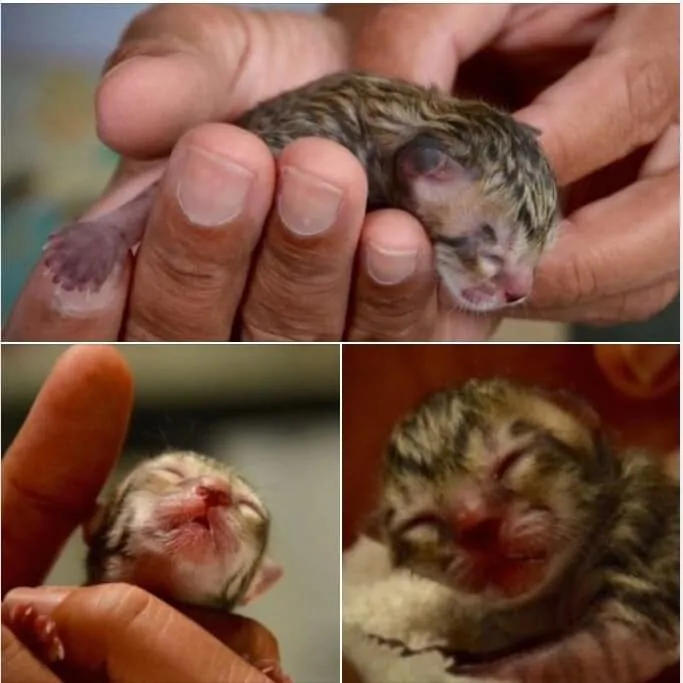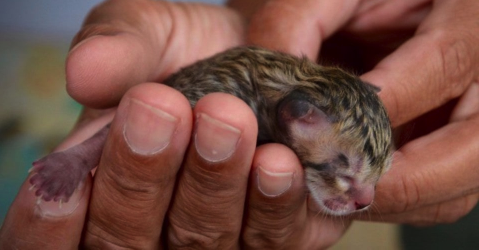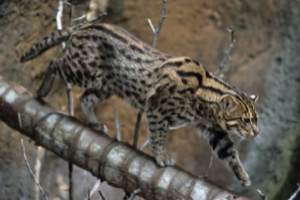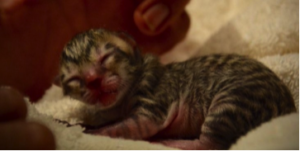In Thailand, a dedicated man was on his way home from work when he noticed something unusual on the street. Upon closer inspection, he discovered a tiny, defenseless kitten, barely making a sound since birth. Moved by compassion, the man couldn’t bear to leave the vulnerable creature alone. He gently picked it up, determined to provide the love and care it desperately needed, knowing that without his help, the kitten would not survive on its own.

Once safely at home, the man nurtured the kitten with warm milk and lavished it with attention. In a short time, the little one began to thrive, finding comfort in its new, loving environment. However, as the kitten grew, the man noticed something unusual about its appearance—it didn’t quite resemble a typical house cat. Intrigued, he sought professional advice and consulted a veterinarian, leading to a remarkable discovery.

To his astonishment, the kitten was identified as a fishing cat (Prionailurus viverrinus), a unique and rare species native to South and Southeast Asia. This fascinating creature can grow to be twice the size of an ordinary house cat and has a natural talent for aquatic life, earning its name from its remarkable ability to hunt and eat fish.
Unfortunately, the fishing cat faces significant threats due to habitat destruction, resulting in its vulnerable status on the IUCN Red List since 2016. The loss of wetlands has led to a rapid decline in their population, underscoring the urgent need for conservation efforts.

With its sleek grayish fur and distinct markings, the fishing cat is a striking creature. In adulthood, it can reach a body length of 75 to 86 cm, a tail length of 25 to 33 cm, and a weight ranging from 8 to 14 kg. Its long legs, partially webbed toes, and sharp, semi-retractable claws enable it to navigate its aquatic habitat with ease.

The story of Simba, as the man named the kitten, is one of survival and hope for the future of his species. In Thailand, fishing cats face severe threats from poaching and retaliatory killings, contributing to an alarming mortality rate of 84%. Simba’s thriving existence represents a beacon of hope amidst these challenges.
It is essential to remember that all animals, like us, are living beings whose survival is vital for the health of our planet. If you share a belief in protecting these creatures, consider spreading the word about this heartwarming story. Together, we can make a difference and contribute to the preservation of our wildlife.

